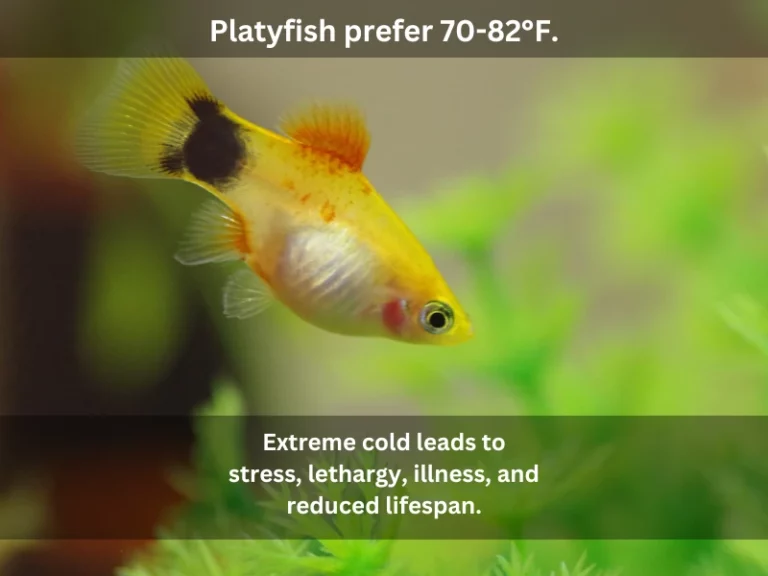Mollies are tropical fish that thrive in warm waters. They prefer a temperature range of 72 to 84 degrees Fahrenheit. Below that, you will need a heater in your mollies’ tank to keep the water temperature in a suitable range.
Notably, in most parts of the U.S., average temperatures are cold for most of the year. It is critical to ensure that mollies and similar fish like platies live in the most appropriate temperatures to remain healthy. Sudden temperature drops are known to stress and harm tropical fish species.
One of the best ways to raise the water temperature in an aquarium is to install a heater with a functional thermostat. This heater will autoregulate and maintain the water temperature to the desired levels.

Importance of a heater in a molly tank
Heaters in a molly tank are critical in maintaining the water temperature to the desired levels. During cold seasons, aquarium water may reach freezing levels and will not be safe for your mollies. This is when you essentially need to have a heater in the tank.
A thermoregulated aquarium heater can be timed to switch itself off when the water temperature reaches the desired levels and switch back on when the temperatures begin to drop. This will provide a constant water temperature that is suitable for your fish.
Typically, all fishes have poor thermal regulation abilities. In their natural habitats, the fish keeps moving around different waters as they seek suitable conditions for survival. This won’t be possible in captivity due to the limited space.
This is why a drastic drop in temperature makes them sluggish, sick, and even die. A water heater is the first line of defense in deterring complications that the mollies may experience due to temperature changes.
Also Read: Can Platies and Mollies Breed?
Heater size suitable for mollies
Heater sizes for aquarium tanks often vary depending on the carrying capacity of the tank. However, the easiest calculation is usually a 5-Watt heater per gallon (4 liters). Hence, a 5-gallon (20-liter) tank would require a 25W heater. 10 gallons (40 liters) will require a 50W heater or two 25W heaters.
Using the right size of heater for your tank helps achieve the desired temperature within a short time and keeps the fish safe. A high-watt heater in a small tank may overheat the water and boil the fish.
On the other hand, a small-wattage heater may overwork heating a large tank and end up blowing up or not providing the desired temperature as required.
It is always ideal to use two or more small heaters in a fish tank than just one as long as their watts total what is recommended for your tank’s size. This distributes heat evenly within a tank. If you use two heaters, be sure to place one on the opposite side of the other in the tank.
Can mollies survive in cold water?
It may not be necessary to install a heater in a molly tank within a tropical climate region. Unfortunately, temperature variations are common in areas away from the tropics and may not be addressed without a heater.
Mollies cannot survive in cold water; as tropical fishes, they prefer temperatures ranging from 72°F to 84°F. Most aquariums with mollies will require an aquarium heater to adjust the temperature to a suitable level for the mollies.
Although molies are hardy, below 68°F, they can survive for a few days before developing complications. This will eventually result in your aquarium fish dying overnight or getting sluggish and weak.
How do you keep mollies warm without a heater?
When attempting to keep mollies warm without a heater, raising the temperature in the room where the aquarium is placed to 78°F is usually the first and most preferred step. Simply run your central heater, and the aquarium water will gently warm up.
Also, every home has colder and warmer areas, which can be used to an aquarium owner’s advantage when going heater-free. Finding a location in the room where the tank may receive at least six hours of natural sunshine per day can also produce good results.
Furthermore, moving the aquarium to a higher level in the room can result in a temperature difference of at least a couple of degrees warmer, as the upper levels of a room are often much warmer.
Avoiding drafty areas may be beneficial because drafty areas tend to run chilly even when there is a central heating system. The cooler airflow may appear insignificant, but it can drop the tank’s temperature to unsafe levels.
Final Thought
Since mollies are tropical fish, they need warm water. Using an aquarium heater, keep your water between 72 and 84 degrees Fahrenheit (23 to 28 C). Be sure to use an aquarium thermometer to monitor the temperature of your tank and ensure it is consistent
References:
- Aquatic community: Molly Fish
- “Fish Basics,” The Ohio State University
- “Poecilia latipinna,” Florida Museum





